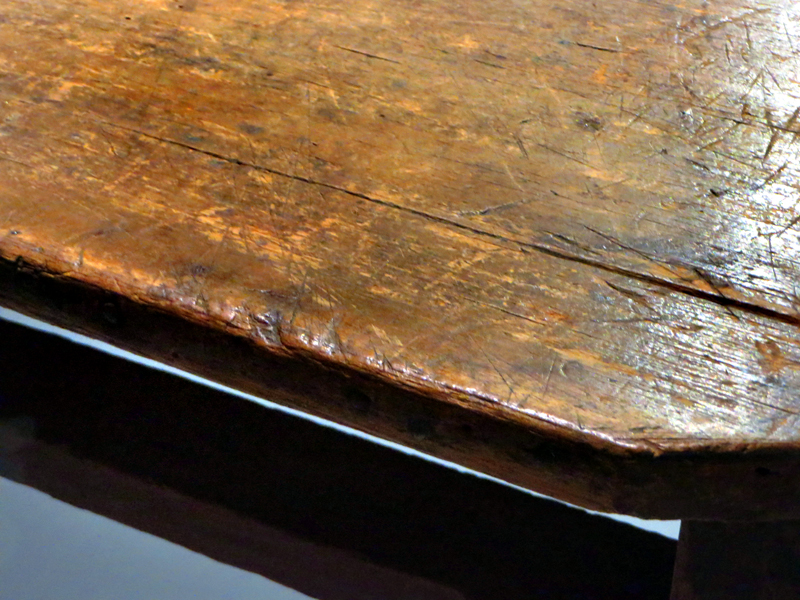|
|
Natural History Museum of Los Angeles County

Click image to enlarge
Table on Which the Treaty of Cahuenga Was Signed On display in the Natural History Museum of Los Angeles County's permanent "Becoming Los Angeles" exhibit, which opened July 14, 2013. SCV Connection: The Treaty of Cahuenga (Jan. 13, 1847) was signed across the street from present-day Universal City. Effectively a cease-fire agreement, it ended the hostilities between the United States and Mexico. It came one month after the decisive Battle of San Pasqual in present-day northern San Diego County, where Edward F. Beale (of later Beale's Cut fame) and Kit Carson played key roles as the Army of the West defeated forces under the command of Mexican Gen. Andres Pico. Signatories to the Treaty of Cahuenga were Pico and John C. Fremont, whose mapping of Western routes included the Santa Clarita Valley in the early 1840s as the United States pursued her Manifest Destiny in the runup to war with Mexico. During the war (1846-1848), Fremont camped in the Santa Clarita Valley while fighting Pico's troops in the San Fernando Valley. After the war, Pico lived at the San Fernando Mission and extracted asphaltum from the canyon that bears his name east of present-day Newhall. Old battlefield enemies would join forces to form an economic alliance as Beale and Pico partnered to explore for oil in the Santa Clarita Valley — without much luck.
About NHMLA's "Becoming Los Angeles" Exhibit: The 14,000-square-foot permanent exhibition is the largest in the Museum. It tells stories in six major sections: Los Angeles and the region at the time of Spanish contact; the Spanish Mission Era; the Mexican Rancho Era; the early American Period; the emergence of a new American city in the late 19th and early 20th centuries; the Great Depression and World War II, to the present. Some of the stories are well known, such as how the acquisition of water through the Los Angeles Aqueduct in 1913 allowed Los Angeles to grow. But there are other natural and human influences might surprise you: how cattle, the Gold Rush, floods, a plague of grasshoppers, railroads, and outlandish booster campaigns all played a part in transforming the region into an agricultural and industrial empire; the pivotal role Los Angeles played in World War II; and the dynamic diversity of the earliest settlers. Come meet L.A.'s Native Americans, colonists and settlers; rancheros, citrus growers and oil barons; captains of industry, boosters and radicals; filmmakers, innovators and more.
LW2682b: 19200 dpi jpeg from digital image 11/23/2013 by Leon Worden. |
Index 
Actinolite Canoe by Ted Garcia 2012 x4
|
The site owner makes no assertions as to ownership of any original copyrights to digitized images. However, these images are intended for Personal or Research use only. Any other kind of use, including but not limited to commercial or scholarly publication in any medium or format, public exhibition, or use online or in a web site, may be subject to additional restrictions including but not limited to the copyrights held by parties other than the site owner. USERS ARE SOLELY RESPONSIBLE for determining the existence of such rights and for obtaining any permissions and/or paying associated fees necessary for the proposed use.







